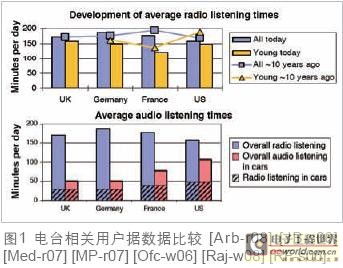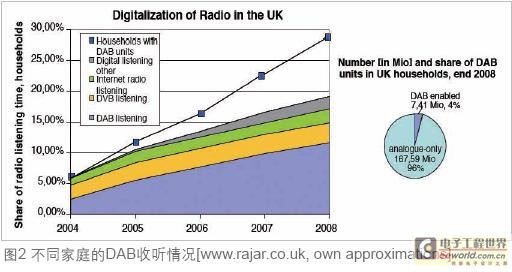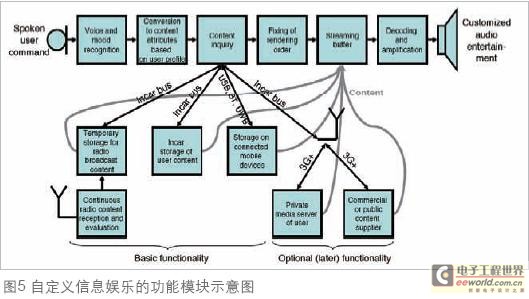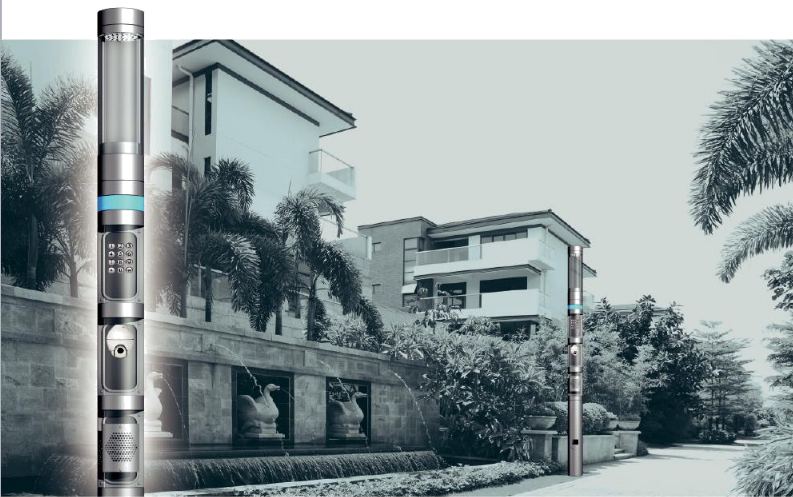NXP talks about the future car audio entertainment system
The car's audio system is the most important form of entertainment. Not long ago, radios, cassette tape players, or CD players could also meet the needs of car users. However, the emergence of multiple audio compression formats (with the rise of the Internet) has led to an exponential increase in personal music collections, and with it comes the urgent desire of users to provide selectivity and availability. In addition, many standards for digital radio broadcasting have also emerged, and the regulatory authorities are currently discussing.
This is a serious challenge for car and car radio manufacturers. This market is significantly smaller than the consumer electronics market. The introduction of new technical requirements for automotive entertainment systems, especially in the early stages, predicts a certain degree of market acceptance. This article aims to show that analogue terrestrial stations will still exist (although traditional business models based on advertising broadcasts are becoming more and more outdated) and good content management (classifying entertainment programs based on sentiment) will be the future differentiating feature.
Radio broadcasting
FM radio broadcasting has established itself in consumers' daily lives. Each household has nearly 6 FM radio devices (Czy-s00) (Mo-r08) (Jaq-s04). As shown in Figure 1, the average listening time in the surveyed country is 3 hours per day. The important thing is that people, especially young people, are listening less.

DAB in the UK At present, about 25% of British households have a DAB receiver, and the DAB listening time accounts for more than 10% of the total radio listening time. More alternative programs are the biggest motivation for consumers to buy DAB equipment (Nel-s03). Unsurprisingly, the DAB program in the London area is the most diverse, and the number of local potential listeners provides room for development for many special types of programs.

However, if the sales of DAB listening devices remain as they are, then until 2018, 90% of British households will not have a DAB receiver. In addition, the situation in the United Kingdom shows that (for economic reasons) only a small portion of programs are transmitted via DAB and FM, and most of them belong to the BBC. Finally, it is also important that only a very small number of DAB equipment in the UK are sold through cars (only about 100,000 units to date, (DRDB-i08)). This is mainly because of the price, but also because of the limited transmission range of the radio, and to some extent, the artificially reduced audio quality has restricted the popularity of car-mounted DBA equipment (DRDB-i08) (Jag-i08). Satellite radio broadcasts in the United States: XM and Sirius launched their respective national satellite radio broadcasts in 2001 and 2002, respectively. Both can broadcast a large number of programs and services (subscription required to listen). Both companies have invested heavily to ensure that the car and the home can receive the same program.

Contrary to terrestrial systems, XM and Sirius control the entire value chain. They are responsible for producing and playing all program content, and provide users with receiving equipment. Providing special types of programs is also one of the principles of this economic philosophy. However, even in the US market, XM and Sirius still cannot make ends meet. They finally agreed to merge SX-p08 only to reduce costs, but still face challenges from technology, competition and consumer acceptance. Satellite radio broadcasting has a large share in high-income families. The competition for free subscription services (such as high-definition broadcasting) may further inhibit (although with limited impact) the prospects of satellite radio broadcasting among low-income groups.
Internet radio stations around the world provide at least 13,000 radio services on the Internet. Figure 4 shows that 10% of people around the world can listen to Internet radio stations. In the UK, there are significantly more households with broadband than those with DAB receiver BTK-r07 (although the listening time is shorter). In the United States, consumers who listen to Internet radio stations have more Arb-r08b than satellite radio users. At the same time, during 2006, a total of 20.4 million people in Europe regularly listened to Internet radio stations, and this number is expected to increase to 31.9 million in 2010 by gol-n06.

During the transmission, the independent connection required by the Internet radio must be realized via the mobile communication system. From the customer's point of view, the normal rate can guarantee the required data transmission (about 1.5Gbyte / month, that is, 30 minutes @ 200kbps / day). It is not difficult to see from Table 2 that the widely used Internet radio stations still lack technical feasibility. This requires the use of the LTE and 900MHz GSM bands, or the re-enabling of the broadcast band as a communication technology. Only then can network operators be interested in supporting mobile network stations in their networks.
So, what are the chances of success for an unestablished digital radio system?
High-definition broadcasting in the United States: With the help of high-definition technology, radio program producers can independently choose to double the program type or improve the reception quality. The technical patents of American high-definition broadcasting are owned by iBiquity. The advantage of this kind of patent ownership is that it can have a clear promotion effect on technology, and the disadvantage is that it leads to the dominance of the entire industry. Automakers such as BMW, Ford, Daimler, and Hyundai are introducing high-definition broadcasts, so that American consumers who buy their products can have FM radio and high-definition radio and satellite radio Selected.

HD stations can eventually improve FM broadcasting in terms of programs / services (satellite stations still have an advantage). However, the US HD market is mainly driven by content providers and technology owners. It is not impossible to stimulate such a market, especially in the case of "free service", but the effect may not be obvious. If handled properly, satellite and terrestrial digital stations can coexist, that is, each caters to different consumer classes, which are either differentiated by economic capabilities or by different applications.
Digital radio stations in Europe (excluding the UK) Europe does not have a comprehensive satellite radio system and FM radio to compete for listeners. This involves a principled issue: it takes time to build a user base. People own radios. They do not have to replace or enhance the existing infrastructure unless it is very convenient to do so (if there is a new and attractive radio technology, it may be faster). Europe (excluding the United Kingdom) still has no digital terrestrial radio stations, technology is constantly improving, and user habits are also changing. The current market space that can accommodate new audio media with rich content is gradually being exhausted. The longer this process takes, the more difficult it will be for digital terrestrial radio technology to enter this market. This means that the prospects for the development of digital terrestrial radio stations in Europe are very difficult, but despite the enormous difficulties, it is difficult to imagine that European radio stations will continue to be in analog mode.
Latest trends and future developments
In the ideal world of personalized entertainment, consumers require (automotive) entertainment facilities to provide "something that can relax them", "the latest sports news, accompanied by music that makes people happy" ... The requirements detected by the user profile are mapped to content attributes and check the available databases from which to form entertainment streaming. With the advanced version, the mobile communication connection will further allow searching the user ’s external personal media servers and / or public and commercial (Internet ) Site. The popularity of the latter means that despite the public resources of the personal media server, there is a two-way connection to the car, so a receivable payment system can be established.
Several methods can be used to integrate the current part of the "custom radio station". As the market develops and merges, not only will the use of personalized radio stations be allowed, but the advertising-based business model will also lead to the collapse of the radio broadcasting industry. Once consumers start to choose programs carefully, and only select the program content they are interested in, it is likely that broadcast audio ads will not work. At present, there are a total of 8,832 radio stations and 95% of the population coverage Czy-s00 in FM programs, which is significantly more than 1,800 radio stations providing high-definition programs and 84% of the population coverage. Whether these new services have added value remains to be seen.

Summary summary
Consumers need personalized choices and comfort. Excellent content management with a reasonable human-machine interface is a basic requirement for future car entertainment systems. But true satisfaction requires inspiration, while integrating the latest content. Today, the latest content is provided by radio broadcasting. For more advanced systems, radio streaming media will be evaluated and classified according to the user's profile, and integrated with personalized entertainment programs to ensure that the car entertainment system can obtain all data. For very advanced systems, the use of mobile data connections to obtain external content can further enhance the data.
Basic technology is a secondary factor for users, but it is decisive for manufacturers. This article shows that recorded music will be dominated by audio compression formats, and that for a long time, FM radio broadcasting systems will still exist. The existing digital radio system has not convinced consumers. At the same time, the development of traditional FM radio stations is gradually lagging behind other media fields.
Intelligent Street Lamps are also called intelligent lighting or smart street lights.It adopts the Internet of things and cloud computing technology to comprehensively upgrade the urban public lighting management system, so as to realize centralized control, operation and maintenance information and intelligent lighting of street lamps.The most advanced versions of Intelligent Street Lamps have been designed to create a happy atmosphere in roads, streets, squares and other places.The design of intelligent street lamps can only be designed by a wide range of discussions and environments that provide an aesthetic consistency.
Intelligent Street Lamp system
The core functions of intelligent Street Lamp include Intelligent lighting,Smart city applications,The information publishing system,Intelligent security,Charging pile,Distributed monitoring sensor system.

Product feature
1.Sensor
Sensor norise
Air pollution sensor
Temperature/humidity sensor
Brightness sensor
Municipal construction monitor
2.RFID
Special crowed monitor
CMC monitor
Community security monitor
Municipal facilities monitor
3.Communication Services
Micro base station
Street lights embedded WIFI hot spot
4.Video Monitor
Security monitor
Vehicle monitor
5.Emergency Broadcast
Active of the external field radio monitoring center
6.Intelligent Lighting
Cellular cooling technology
Based on the luminance uniformity of light distribution
Intelligent single lamp/center controller
Variety of modular design lamp,holder is optional.
7.Information Release
Advertising exposure
Current politics news
Information release
8.Charging Column
Electric car
Electric bicycle

Intelligent Street Lamp
Intelligent Street Lamp,Street Lamp,Street Lamp Post,Intelligent Lamp
Jiangsu chengxu Electric Group Co., Ltd , http://www.chengxulighting.com